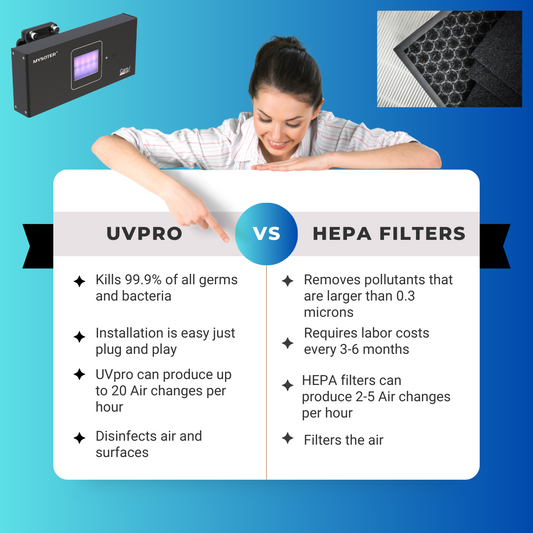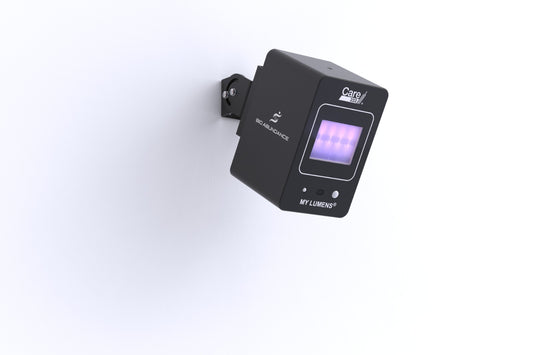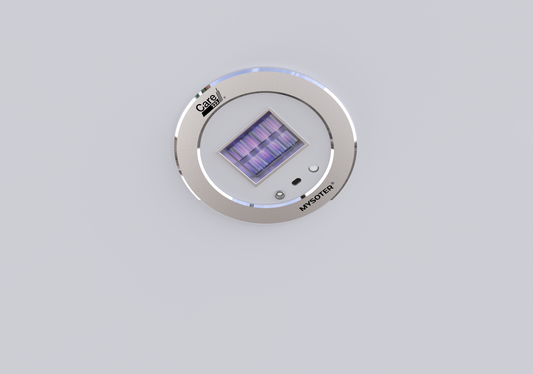- Are Far UV devices FDA approved? FDA does not deal with UV-C for approval. Far UV-C products are only guided by the ACGIH, the international safety standard of 222nm UV-C lights. Which limits all Far UV-C lights to only emit 161 mJ/cm² or lower. The EPA does regulate in-duct UV-C and air purifiers with built in UV-C since those devices can pose a higher risk to human health.
- How do you know that only the 222nm wavelength is being emitted?
You can use a UV light meter to calculate the wavelength being emitted, since these items can be expensive. Our best recommendation is going with reputable manufacturers like Ushio America, MyLumens, and Far UV Technologies. Who by their own collaboration with scientific testing and radiation experts have confirmed that only 222nm is emitted. Here's a link to the light meter by our manufacturer Ushio https://www.ushio.com/product/uit2400-handheld-light-meter-for-222nm/
- Describe the clinical trial data regarding safety of the product regarding eye exposure/skin damage.
Light at the wavelength of 222nm has been proven by dozens of studies to be harmless to our skin. As experts have proved with our device that 8 hours in front of the UVpro is equivalent to the radiation one would receive spending 15 seconds in the sun. In terms of eye exposure there are fewer studies, but enough to prove it is harmless to the eyes. One of the first studies created in 2019 was performed on rat eyes. They compared exposure of 254nm light versus 222nm light and measured the effects to the cornea. The results were simple. High levels of 254nm wavelength had damaged the cornea of rats. Versus high doses of 222nm light which caused no damage to the cornea. Of course, this is rats so our manufacturers performed their own study to evaluate the effect on human eyes and skin.
Here's the link to both studies: https://pubmed.ncbi.nlm.nih.gov/30947566/#:~:text=In%20the%20current%20study%2C%20no,preventing%20infection%20in%20the%20future.
- What professional medical or public health organizations have endorsed Far UV?
During the March 2022 Clean Air Building Challenge, The White House supported and continues to support using Far UV 222nm in occupied spaces as part of its layered approach to help achieve the minimum 5 equivalent air exchanges required to reduce the spread of infection. The EPA , Columbia University College of Medicine. The American Society of Microbiology and many others support and endorse Far UV-C as an effective and safe protective measure from viruses.
-
What organizations certify the safety and efficacy of Far UV?
There are no organizations that specifically certify the safety and efficacy of Far UV-C products as of right now. Of course, this is still a new technology, but in accordance with the ACGIH we can say our products fall in line with all required guidelines for Far UV-C. There is just the limit guidance of exposure posed by the European union and ACGIH.
- How can consumers be sure they are not receiving counterfeit or fake Far UV product?
What we tell our customers, if it's too good to be true, do not go for it. Real Krypton Chloride Lamps are expensive and if the Far UV-C lamp is not between the value of $800- $3,000 it is potentially counterfeit. Make sure companies have sufficient data that support the safety and effectiveness of their devices.
- How does the efficacy of Far UV change over time with light sources and degradation of filters?
Just like the bulbs we normally use, Far UV-C lamps degrade overtime. Our devices start to decay about 6% after 3,000 hours or 375 days of on time. Full decay is projected to be after 10,000 hours of on time at roughly 3 years. The filter does not degrade at all as it is a solid material that requires no electrical or mechanical energy.
- Does Far UV produce ozone and if so is it harmful?
In a standard room without air flow it would take 267 hours for a Far UV-C Krypton Chloride lamp to fill the room to 0.05ppm. The FDA limit on ozone level produced in a day is 0.05 ppm indoors. So yes, it does produce ozone, but it is well below what the FDA considers harmful. Additionally, our highly-safe devices have carbon filters that reduce those emissions by 70%. Ozone is not even a concern with our units.












